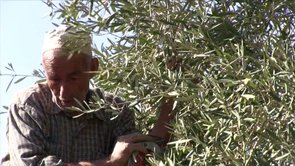Tag: Farmers
-
Photos: Eid al-Adha under the Gaza siege
18th October 2013 | International Solidarity Movement, Charlie Andreasson | Gaza, Occupied Palestine It’s Eid al-Adha, the festival commemorating Ibrahim, or Abraham as the Christian part of the world knows him, and his willingness to sacrifice his son. He never had to do it, and none of the three monotheistic religions are associated with human sacrifice,…
-
Video: The olive harvest in the Gaza Strip, 2013
16th October 2013 | International Solidarity Movement, Gal·la | Gaza, Occupied Palestine Palestinians in the Gaza Strip harvest olives during the month of October. Several years ago, a large amount of land was planted with olive trees. They were completely destroyed by Israeli bulldozers, and Palestinians were prevented from replanting them by the so-called “green line.” Today…
-
Israel exploits Egypt turmoil to increase attacks on Gaza farmers
18th September 2013 | The Electronic Intifada, Joe Catron | Gaza City, Occupied Palestine Farming in the Gaza Strip’s “buffer zone” is hazardous under the best circumstances. Israeli troops routinely shoot live ammunition at Palestinian farmers in the free-fire area, which stretches hundreds of meters into the besieged territory from the barrier separating it and Israel, and invade their fields…



